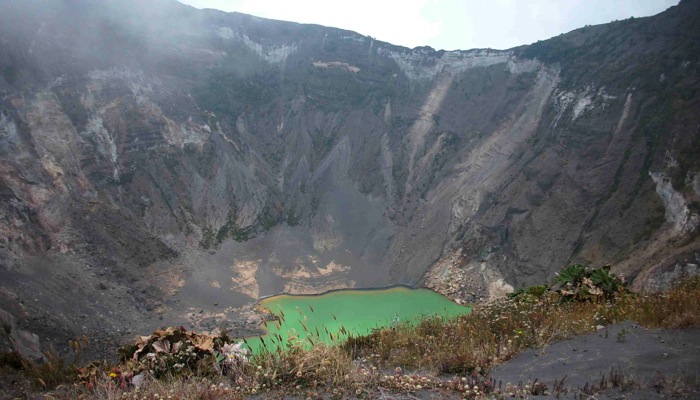
Irazú
Legends says that chief Coo, who was losing a battle against chief Guarco, took his daughter Iztarú to the top of the volcano and sacrificed her. The volcano erupted in fury and destroyed Guarco’s village. Peace followed in the region, but the volcano, now called Irazú, has been anything but peaceful. Since 1723, when the Spaniard Diego de La Haya documented an eruption during his governorship of Cartago, at least twenty more eruptions have been recorded. The most memorable one was in 1963, the day that John F. Kennedy visited Costa Rica. It rained ash for two whole years! Today, the volcano stood still during our visit of the Parque Nacional Volcán Irazú, located about 30 km from Cartago, the old capital of Costa Rica. We walked over the field of volcanic ash and joined a group of Colombian nuns to admire the main crater, which has a diameter of 1050 meters and a green lagoon at its bottom. Once in a while, clouds whooshed in and out the crater. It was past eleven, way too late in the morning for there to be a clear sky. If it had been cloudless, we would have had the possibility of seeing both oceans from this vantage point at over 3400 meters (11,200 feet) above sea level.
Wednesday, April 8, 2009